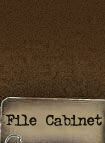 |
| |

File No.:
Case File # 14
Title:
Nazi Hollow Charge Attack on
Belgian Casemate
Subject: German airborne
troops using hollow charge
explosive ordnance in their
attack on a Belgian Fortress
during the Blitzkrieg.
Investigation made at:
Fort Eben Emaël,
Municipality of Eben Emaël,
Belgium
Period Covered:
May 10th & 11th, 1940
Date: April-May
2010
Case Classification:
Description of Nazi airborne
forces attack on Belgian
fortress during May 1940
invasion
Status of Case: Case
Closed
Introduction: This Case
File describes a small
element of the assault on the
Belgian fortress Eben Emaël in
May 1940. Scores of publications
have been written about this
fortress and the overall assault
on it, but we focus on a special
weapon first put to use for
military assault purposes.
REASON FOR INVESTIGATION:
In
the period right after the
attack and during the Nazi
occupation of Belgium and other
European countries, the German
propaganda machine did exploit
their successful raid on the
fort,
but deliberately failed to
mention the use of "new types
of assault weapons". At Eben
Emaël the assault glider and the
hollow explosive charge got
their baptism of fire. In this
Case File we reveal to the
general public the use of the
hollow charge as a weapon kept
secret to it by the Nazi's.
|
|
SYNOPSIS:
The Belgian fortress was
constructed inside a hill with
artillery casemates and armored
cupolas on the hill's plateau and
was considered impenetrable at the
time it was built, between World War
1 and 2. On May 10th 1940 it was
proven that the concept of national
defense by means of gigantic chains
of fortified artillery positions had
become obsolete.
On that day
well-trained German airborne assault
troops used speed, the element of
surprise and new military techniques
to put the fortress's powerful
artillery out of action in a very
short amount of time. One of the
aforementioned new military
techniques was the assault glider;
the other special weapon was the
so-called hollow charge. |
A hollow, or shaped,
charge is a concave metal hemisphere
or cone backed by
a high explosive, all in a steel or
aluminum casing.
When the high
explosive is detonated, the metal
liner is compressed and squeezed
forward, forming a jet whose
tip may
travel as fast as 10 kilometers per
second.
Charles Edward Munroe was the
inventor of "The Monroe Effect" in
explosives in 1885. He noted that a
high explosive with a cavity facing
a target left an indentation. The
Monroe Effect was rediscovered by
Von Neumann in 1911, but no
practical applications were
developed. A Monroe-effect
shaped-charge warhead can be
expected to penetrate armor equal to
150-250% of the warhead.
- source: GlobalSecurity.org -
|
|
.jpg) .jpg) |
|
|
|
The attack on the fortress was
planned to start 5 minutes before
the German "Blitzkrieg"
invasion of the Netherlands and
Belgium and was codenamed "Granit".
Also three bridges across the Albert
Canal were the objective of German
glider borne troops.
They formed an
86 man unit, named "Sturmabteilung
Koch", divided into eleven
groups with varying missions.
The
group of gliders assigned to attack
the fortress was led by Lieutenant
Rudolf Witzig.
These DFS 230 type
gliders carried over 5000 lbs. of
explosives. The attackers brought in
flamethrowers and twenty-eight 50
kilogram hollow charges. Nine of the
eleven gliders, attacking the
fortress, landed on the hill’s
plateau. Immediately after landing,
each 8 men crew rushed from their
glider and started attacking the
three objectives most dangerous to
them: the four anti-aircraft
machineguns and the positions named
MI NORD and MI SUD.
After
eliminating these threats, the
attackers focused on a casemate
named "MAASTRICHT II"; a concrete
bunker with three artillery pieces
and a steel observation dome named
"EBEN III". They threw a 12 and a
half kilogram hollow charge into one
of the canon holes and several hand
grenades into the casemate’s
ventilation shafts.
The steel
observation dome was then put of
action with a 50 kilogram hollow
charge.
Of MAASTRICHT II's twenty
four men crew only three artillery
men escaped unharmed, six were
killed and the rest wounded. In
fifteen minutes the most important
casemates, artillery cupolas,
anti-aircraft positions and the
machineguns in the bunkers were
rendered "Kampfunfähig"
(German: combat ineffective). In the
following hours the rest of the
fortress was attacked by entering
the doorways to the tunnels and gun
turrets.
This remarkable German victory was
exploited in the Nazi war
propaganda. The text of a German
Wehrmacht communication dated May
11th 1940 put it like this:
"Das Fort wurde schon am 10. Mai
durch eine ausgesuchte Abteilung der
Luftwaffe unter Führung von
Oberleutnant Witzig und unter
Einsatz neuartiger Angriffsmittel
kampfunfähig gemacht und die
Besatzung niedergehalten."
(Already on the 10th of May the
fortress was rendered combat
ineffective and its crew captured by
a selected Air Force unit under the
command of Lieutenant Witzig
deploying new types of assault
weapons.)
To the public, these new types of
assault weapons (assault gliders and
hollow charges) were kept secret.
A propaganda film, shot on location
in the months after the attack,
gives great emphasis to the role of
the"Wehrmacht" (army)
over that of the "Luftwaffe"
(air force). The dramatic footage
(featuring large explosions, smoke
grenades and German machine guns
acting as Belgian defensive weapons)
portray German soldiers wearing the
characteristic regular army steel
helmets but show neither gliders nor
the use of hollow charges:

EXHIBITS:
Nonetheless, we found two period
photographs of German soldiers
carrying the components of a 50
kilogram hollow charge:
(click on the
thumbnails to enlarge)
_small.jpg)
_small.jpg) |
|
Fort Eben Emaël Today
At present the fortress is open to
the public on one weekend in every
month. Reservations can be made for
guided tours through the 5 kilometer
long tunnel system with visits to
the – still working - retractable
gun cupolas, the huge steel
stairwells and the plateau.
(click on the
thumbnails to enlarge)
_small.jpg)
_small.jpg)
_small.jpg)
_small.jpg)
_small.jpg)
_small.jpg)
_small.jpg)
_small.jpg)
_small.jpg)
A modest museum features an example
of the 50 kilogram hollow charges
used, among other targets in the
fortress, against “MAASTRICHT II”
casemate:
(click on the
thumbnails to enlarge)
_small.jpg)
_small.jpg)
|
|
Reenactment of the attack on
Casemate Maastricht II
On Sunday May 16th 2010, little
over 70 years after the attack on
the fortress, reenactors in period
German and Belgian uniforms
demonstrated the glider landing, the
capture of the anti-aircraft machine
gun crews and the
detonation of a 50 kilo hollow
charge on the "EBEN III" steel
observation dome on top of
"MAASTRICHT II".
Battledetective.com was there and we
registered the following sequence of
events:
(click on the
thumbnails to enlarge)
_small.jpg)
_small.jpg)
_small.jpg)
_small.jpg)
_small.jpg)
_small.jpg)
_small.jpg)
_small.jpg)
_small.jpg)
_small.jpg)
_small.jpg)
_small.jpg)
_small.jpg)
_small.jpg)
_small.jpg)
_small.jpg)
These
images are a mix of what was shown
to the audience on the fortress’s
plateau and a subsequent exclusive
demonstration for this website by
the (Dutch) reenactor who played the
role of
Hans Niemeier, the squad leader
of "Truppe 1" (section one)
of the "Granit" assault
group.
The images clearly show the
distinctive method of transportation
of the two components of the hollow
charge, the relatively flat lower
component, the larger bee hive
shaped top and the insertion of a
time delay fuse.
In the
demonstration for the public, a
Styrofoam replica was blown up with
pyrotechnics.
An accurate steel
replica was used in the closer up
demonstration for
battledetective.com. |
|
Belgian Veteran of the May 10
1940 Assault
Also present was a Belgian
veteran of the artillery units of
Fort Eben Emaël. He is Georges
Cavraine from the city of Herstal
and is one of the last living
Belgian veterans of the fortress's
garrison.
(click on the
thumbnails to enlarge)
_small.jpg)
_small.jpg)
Georges explained to us that he had
been stationed inside the fortress
on that fateful 10th of May 1940.
He also told us that this was the
third time he had been back at the
fortress since World War Two.
Note the stark contrast between this
survivor of the violent "Granit"
assault and the reeanctors posing as
conquering warriors: |
|
(click on the
thumbnails to enlarge)
_small.jpg)
_small.jpg)
_small.jpg)
_small.jpg) |
|
 |
|
|
|
|
|













